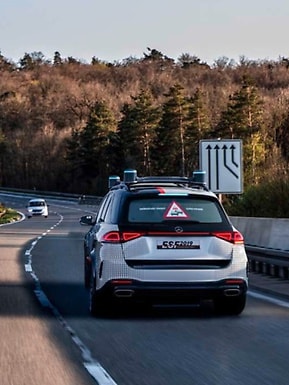It is still dark outside when Kai Neugebauer leaves his home in Gaggenau for his workplace in the early morning. He does location planning for assembly processes at the Mercedes-Benz plant in Rastatt. Every morning, he walks to the station and then takes the train to Rastatt for about 15 minutes. Until about a year ago, he would have switched to the bus followed by a tight walk to the plant. Since July 2019, his mornings have been more relaxed. That’s because an employee shuttle service to the Rastatt plant was launched last summer. Every quarter of an hour three Mercedes-Benz Vito vans now drive employees like Kai Neugebauer from the train station directly to the plant — in less than 15 minutes.
Neugebauer likes the shuttle service. “Especially in the winter, the shuttle saves me a trip in a crowded public bus and long walks in the cold,” he says. He enjoys his job, but that the daily rush to Rastatt is sometimes stressful and leaves him less time for his family and friends. “The shuttle service has significantly reduced stress,” he concludes.









